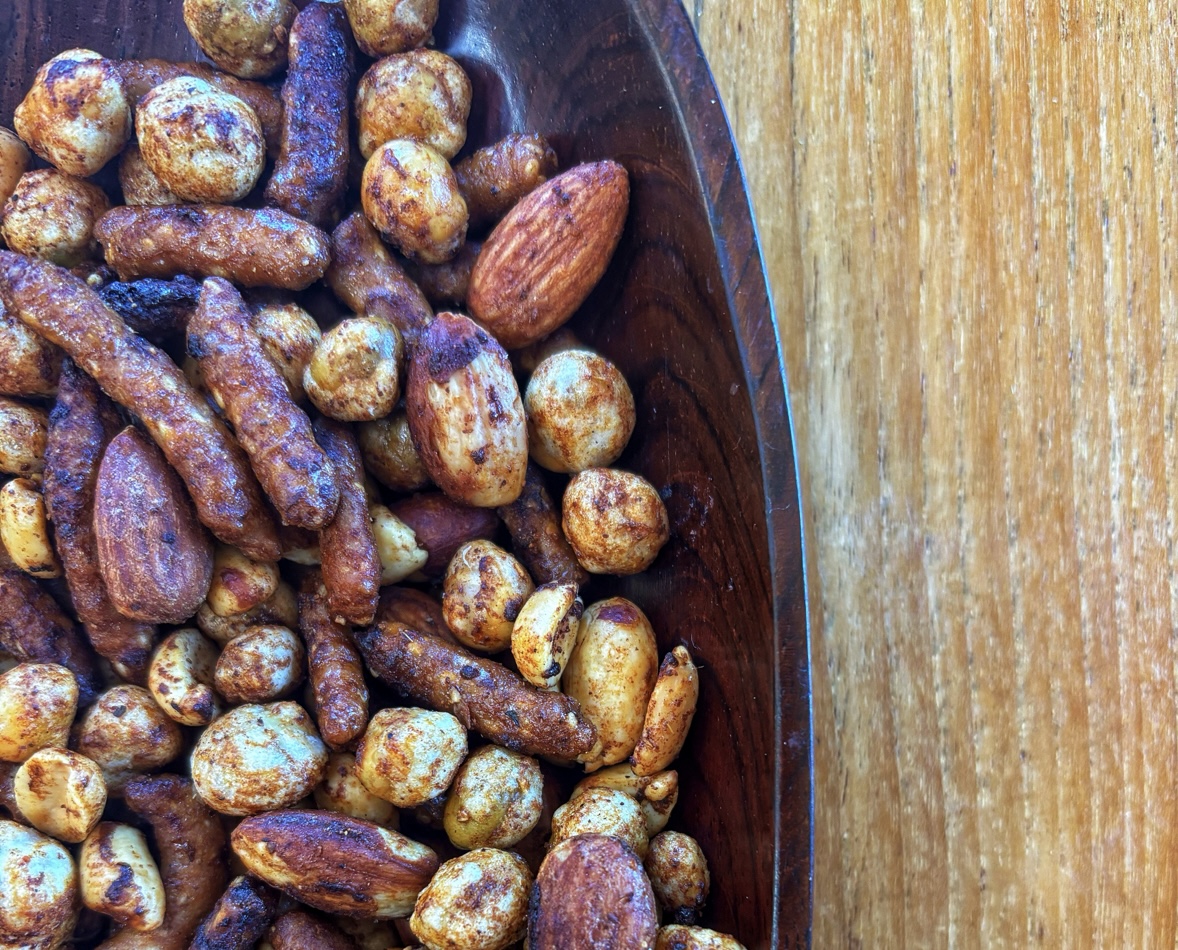This is the second in an ongoing series about sweeteners. When we first visited this topic, Sugar, Sugar, Everywhere touched on the ills of consuming so much sugar, how it is produced, and what type of sugar is best to consume. This month, I take a look at agave.
For some time I’ve had agave syrup in my pantry. Yet, despite knowing its versatility and health benefits, it has been sitting on the shelf, patiently awaiting to be used.
Recently, while in spring-cleaning mode, it was my goal to use everything in the pantry that had been sitting around for a while. So, when we ran out of maple syrup for pancakes, I pulled the agave syrup out and for the next two weeks, we all used the agave syrup on our pancakes and waffles. And then I got thinking about what else I could use the agave for.
What is Agave?
If you didn’t already know, agave nectar is a natural sweetener that is used in moderation by dieters, some diabetics, and health conscious cooks – to replace high-glycemic and refined sugars. The agave plant resembles an aloe vera or cactus plant, and grows in dry r egions and specifically thrives in Southern Mexico.
Agave nectar has a favorable glycemic profile. It is about 1 ½ times sweeter than sugar, with its sweetness mainly due to a complex form of fructose called inulin. (Fructose is the sugar that occurs naturally in fruits and vegetables).
The carbohydrate in agave nectar has a low glycemic index, which provides sweetness without the unpleasant “sugar rush” and unhealthful blood sugar spike caused by many other sugars. Fructose is processed more slowly in the body than is glucose (sugar), providing a gradual, steady supply of energy to the body.
Agave has been enjoyed through the ages for its healing properties. The Aztecs used a blend of agave nectar and salt to heal skin disorders or infections. Today, studies have confirmed its remedial properties, and when applied to the skin has been found effective deterrent against pus-producing bacteria, and adding salt to the nectar its anti-microbial properties are further boosted.
What is the difference?
A growing number of agave brands can be found on the store shelves, so I wanted to know what is the difference, and how to choose among them. I got on the phone to find some answers.
There are two types of agave used for sweeteners – blue and white. Most agave syrup is produced from the Blue Agave plant, and can be sold as Light or Blue Agave.
As Karen Stevenson, Consumer Marketing Manager for Wholesome Sweeteners explained, “The flavor and color of Wholesome’s blue agave syrups are determined by our filtering processes. Blue Agave oxidizes when it hits air (like an apple does when left out for a bit). Though the Light and Raw Blue Agaves are hydrolyzed at different temperatures, it’s the filtering that gives our blue agaves their color and flavor profile. The Raw is minimally filtered therefore it has more color and a richer flavor profile.”
When asked what separates agaves on the market, Stevenson explained, “the specific species used as the raw material, the processing methods and sugar content, (which varies from brand to brand). All three points affect the syrup’s flavor. It’s a matter of personal preference. (And sadly, some suppliers include non-organic ingredients in their agave blends. It makes things so confusing for the rest of us).”
According to Jon Tueller, of BetterBody Foods & Nutrition, the company that makes Xagave, a blend of agave nectars – both the blue and the white, “White agave has a cleaner more neutral taste than the blue agave, which can change the profile of what it is used in. But, that doesn’t mean that blue agave’s flavor is a deterrent to using in a variety of recipes. In fact, the flavor of blue agave can enhance such as is the case when used in a barbecue sauce, giving it a slight nutty taste. However, if your intent were to use agave without altering the taste of the final food, for instance, to make a cake, the white agave would offer a more neutral flavor.
Tueller continued to explain the unique blend of blue and white agaves to create Xagave: “By extracting the inulin from the blue agave and infusing it with calcium-rich white agave, we have created an exclusive agave nectar blend.” The neutral and uniform taste with a perfect level of sweetness. Further, it contains a standardized level of inulin, a prebiotic fiber, calcium, iron and other vitamins and minerals.
How to Use Agave?
For those whose diets don’t permit sweet items, cooking, canning and baking can be a challenge.
Although I’ve know n about the goodness of agave for some time, but the biggest deterrent for me using agave in my daily cooking and baking has been that I just didn’t trust that it could satisfy my taste buds when substituted for sugar in my favorite foods and baked items. I know that using other natural sweeteners can cause foods to taste a bit bitter, and at times, they can be difficult to use in cooking.
Even the most experienced cook can be challenged to make a substitute with other natural and artificial sweeteners without compromising the food’s quality or its palatability.
“I like using agave because it tastes good, and a little goes a long way,” explains Stevenson of Wholesome Sweeteners. “I don’t have issues with sugar, but I like agave’s flavor, just the slightest drizzle of agave makes my fresh berries berrier(it’s a flavor enhancer). And–especially this time of year, I love the way just a little sweetens my iced tea. I don’t need to wait for agave to dissolve, a little squeeze and a quick stir is all it takes. I use the Light Blue Agave for brightening flavors–as mentioned earlier, it’s a flavor enhancer; and I prefer the Raw for recipes in which I want just the slightest richness added.” The company recently introduced flavored agave syrup. The Strawberry flavored version is an ideal topping for cheesecake, making strawberry lemonade, or in salad dressings.
According to Tueller, “Xagave is the only all natural sweetener that is as versatile as sugar, reduces calories, has low glycemic level and has health benefits.” According to Tueller, you can take all your cooking, canning and baking recipes and convert them. “You can use Xagave in just about any recipe and you won’t alter its flavor.”
He continues, “I found mom’s old recipes, from breakfasts to main course and desserts, and I have been able to easily convert them using Xagave. They still have the fantastic taste.”
One final note from Tueller, “It is important to realize that agave is not a low calorie sweetener. “It has calories. Your body needs calories, but it is essential to have the right type of calories
Hearing this, I got to baking.
If you choose Blue Agave, here are a few suggestions from a Wholesome Sweeteners:
“Blue Agave is about 35% sweeter than sugar, so we recommend that bakers begin with just 75% of the measure called for in the recipe. So, if the recipes call for 1 cup of sugar, used ¾ cup of agave, then adjust to taste.
Agave adds liquid to recipes, so reduce other liquids (especially water or milk) by about ¼ to 1/3.
Agave browns at a lower temperature than regular sugar, so we recommend baking “lower and slower.” Drop the temperature by 25 degrees or so, and add about 10 minutes to the timer.
And a few suggestions from Xagave: The Sugar Exchange Table



1 thought on “Agave”
Pingback: Sugar, Sugar, Everywhere